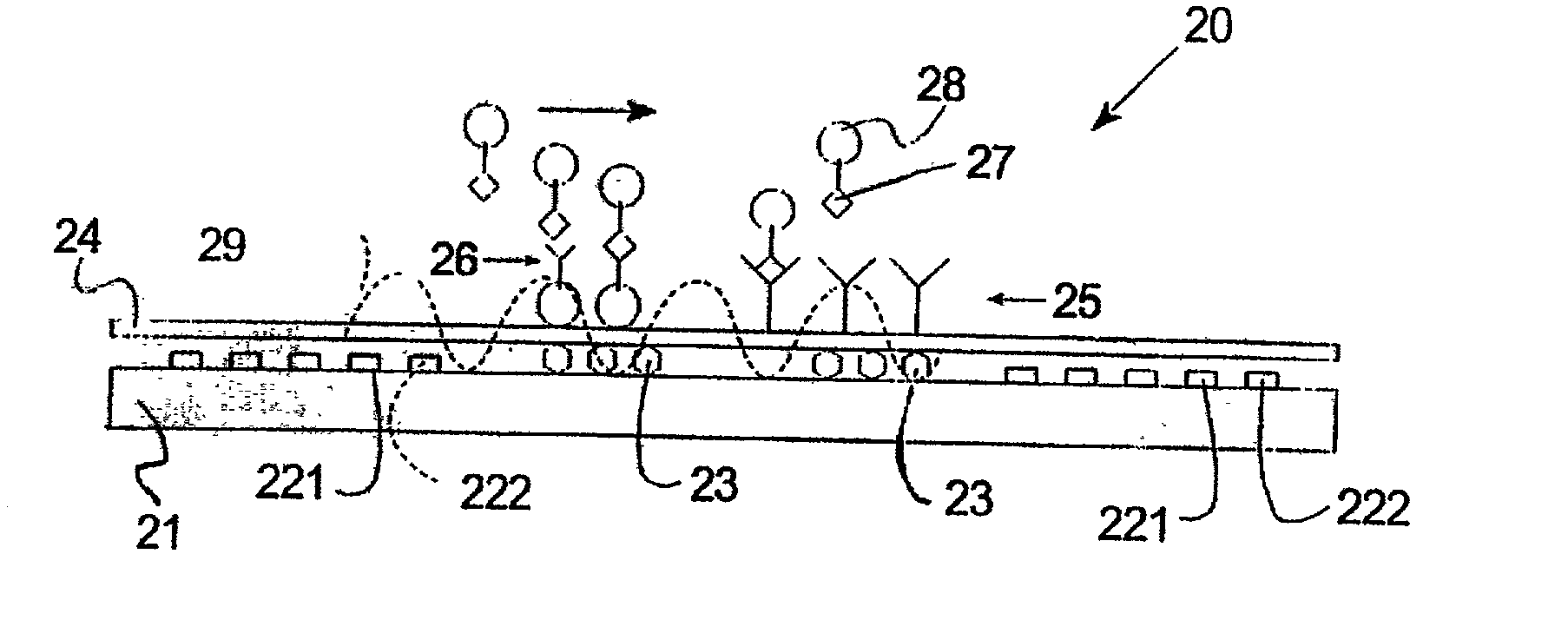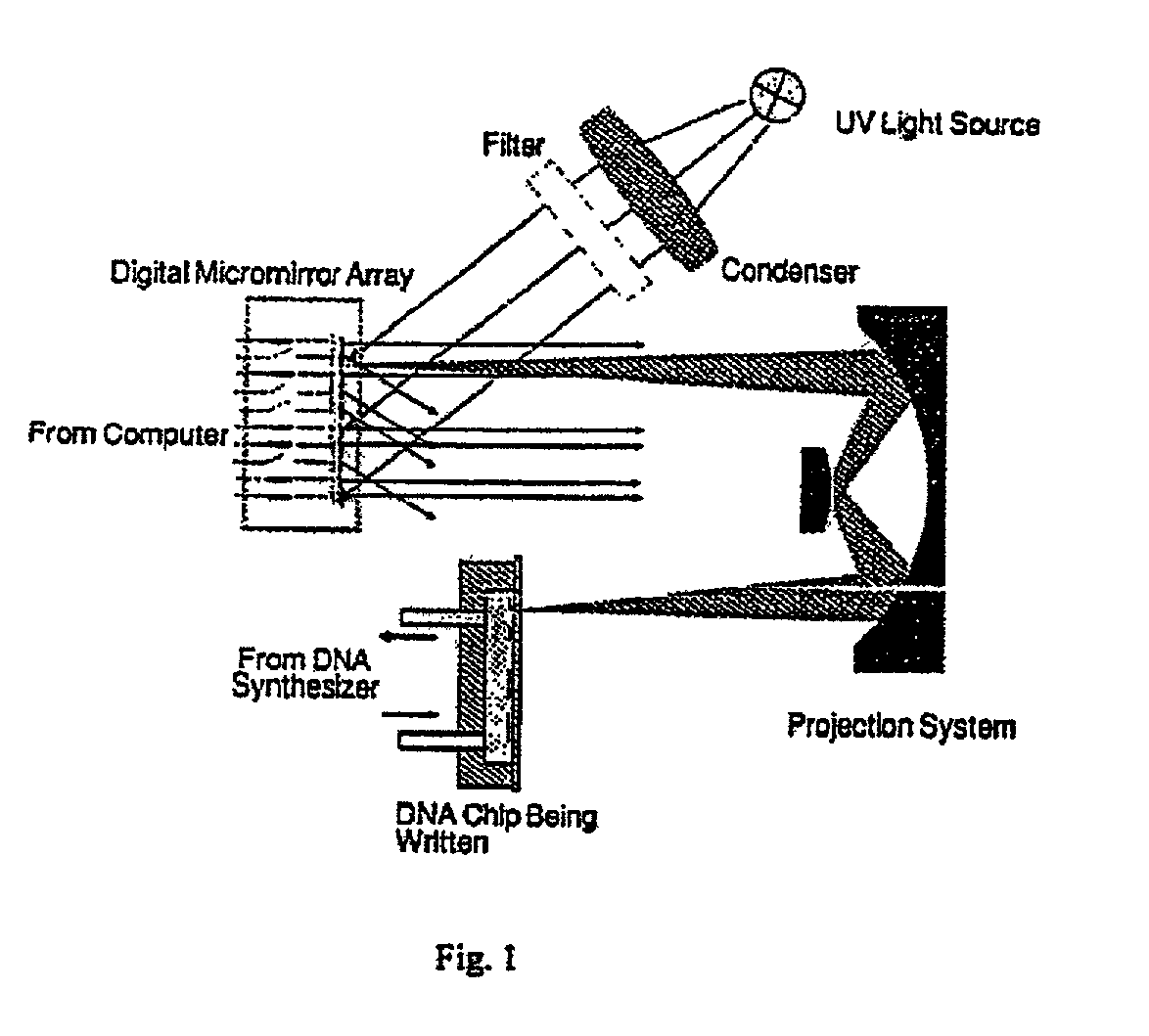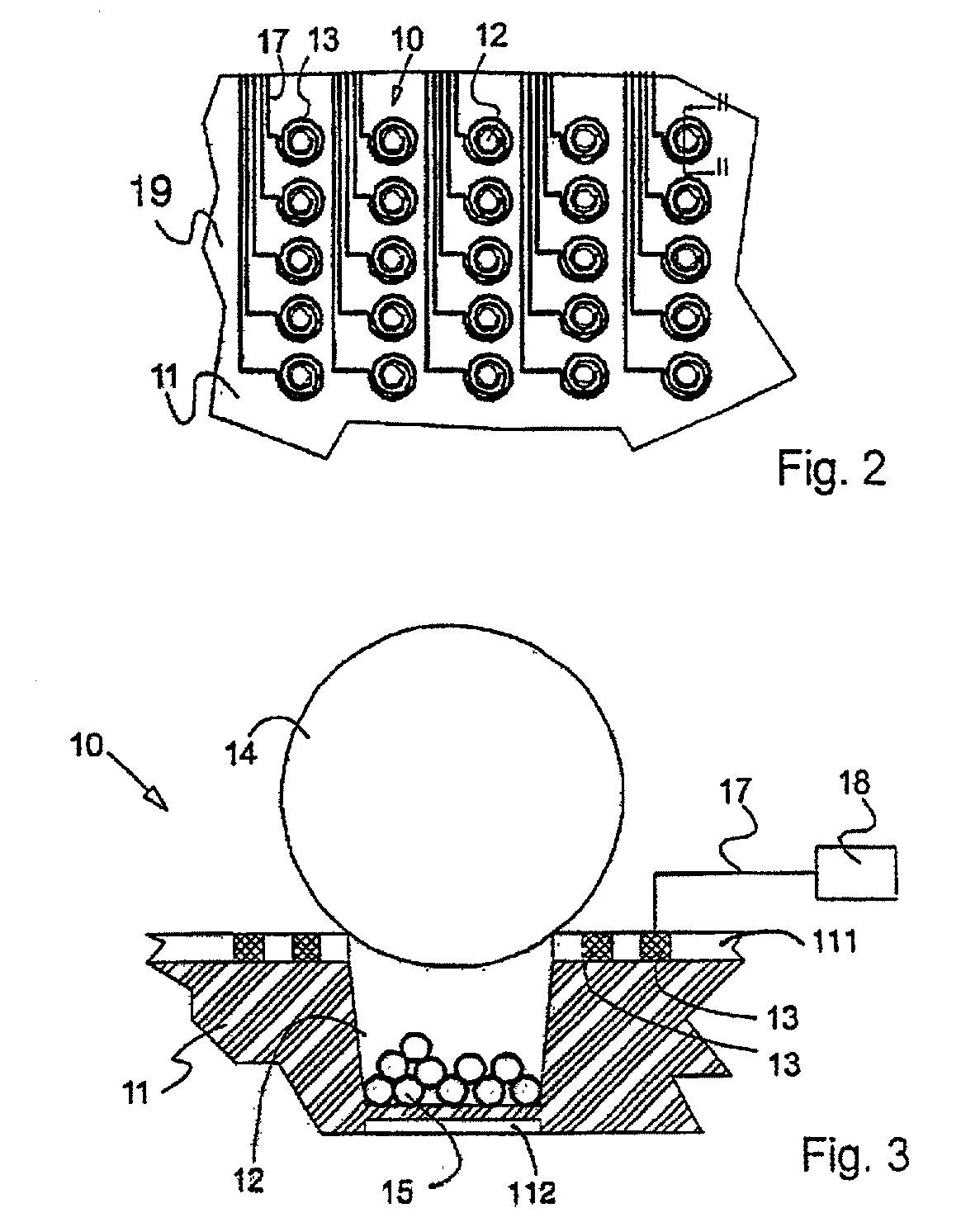[0016] The present invention advantageously provides a user with the ability to quickly and efficiently custom design an "experiment" as opposed to using a ready-to-use product which is generally very difficult to modify. The present invention provides an easy-to-
handle platform, which may be used repeatedly and may be prepared in-house. Consequently, the present invention is not limited to the surface deposits as are the devices described above (see, e.g., FIG. 1), but allows
sample preparation either by surface deposition (e.g., at the bottom or at the walls of a crater) or by utilizing
liquid state reactions allowing
reagent contained in the liquid trapped within each well by a cap to mix with reagents contained in the liquid above the craters by opening the "lids" (caps) at will.
[0039] The present invention provides platforms useful for performing a variety of biological and chemical assays. In one embodiment of the present invention a substrate is provided with one or a plurality of wells or craters formed in the substrate. Individually controllable lids are provided in some embodiments to allow for contained environments within each crater or well. Such devices are intended to be used in a fluid medium, for example, submerged in a liquid, covered by a gel, or introduced to air or other gaseous environment. By controlling the lids, each enclosed crater volume becomes separated from the surrounding environment. Any materials, e.g., fluid medium within the crater, particles suspended therein, and / or material that adheres to an enclosed crater's inner surface, are not affected by subsequent changes that occur in the surrounding environment while the lid is closed. Such changes include presenting different chemical compositions to the surrounding fluid medium, irradiating the device or individual craters, or providing
solid materials in the surrounding medium. A lid may or may not be completely liquid-tight, but mixing of the medium outside an enclosed well with the medium contained inside a well will be dramatically slowed. Hence, each lid provides an effective means to separate materials, e.g., solids and / or liquids, in the interior of the well from materials outside the enclosed well. In this manner, different wells can be populated with controlled amounts of different substances, e.g., different
chemical species, by selectively opening and closing wells as changes are made to the surrounding environment.
[0046] The general idea of the present invention is to manipulate
small particles in order to bring one or more to a specific location on the surface of the substrate using individually addressable
magnetic field(s), or other force transduction fields, as a driving force for particle manipulation. The surface of the substrate may be either patterned in a particular manner, or not. When the substrate includes craters (with or without a pattern) as shown in FIG. 3, some particles may be used as caps or lids to close craters as described earlier. When the substrate is left without a pattern or patterned in a different manner the particles can be used mainly as a way to enhance sensitivity of detection of the processes taking place in the device (e.g., on the surface of the substrate).
[0065] FIG. 13 illustrates a modular arrangement similar to the arrangement shown in FIG. 12, including an additional interface module 160 including micro-
optics, such as an array of micro-lenses, to enhance detection by the
sensor array 150.
[0066] To open a closed crater, or a filled pocket, a repelling field is generated either externally or by inverting the direction of the current flowing through the coils. It is also possible to terminate the current through the coil, whereby the particle may be released due to
shear force from a flowing fluid or due to gravitational forces, e.g., if the craters are positioned "upside down". In pocket embodiments,
controlled release and retention of beads may be facilitated by introducing an appropriate bead transducing field, e.g., coils to produce a
magnetic field. Electrostatic and / or
electrowetting field transducing means may also be implemented. Also, a physical armature may be provided proximal each bead retaining pocket.
[0067] The simple actuation of the crater lid using current-controlled magnetic field(s) and the potentially large number of craters on a
chip makes it desirable that the
chip is operated automatically through a controlling arrangement. The
chip is preferably provided with an interface device that establishes
electrical connection with the chip and provides control of the handling of the surrounding fluid with the beads and chemicals. After use the chip may be removed for cleaning and reuse or disposal. The interface device is preferably configured to connect to a computer equipped with suitable
software to control the sequence of operations on the craters and the liquid
handling system. The
software also preferably provides an interface (e.g., GUI) for the user to establish process sequences and to plan the states of the crater lids at each stage in each sequence.
 Login to View More
Login to View More  Login to View More
Login to View More 


